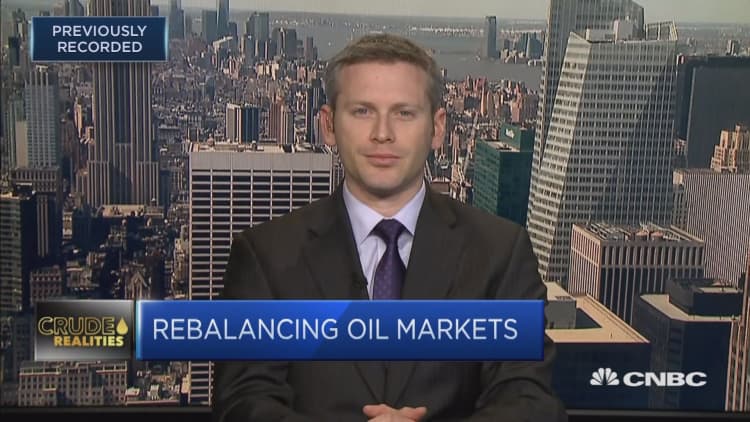Oil prices edged higher in choppy trade on Thursday, supported by a pickup in equity markets but pressured by expectations that crude supply will exceed demand later this year.
Brent crude futures settled 23 cents higher at $65.12 a barrel, while. U.S. West Texas Intermediate (WTI) crude futures ended Thursday's session 23 cents higher at $61.18 a barrel.
Oil rose in tandem with a pickup in U.S. stock markets . Crude futures have moved in sync with equities uninterruptedly for the past 99 trading days, the longest such stretch in two years. The S&P 500 stock index rose about 0.15 percent.
Prices bounced around after the United States announced new sanctions against Russian individuals and groups, including Moscow's intelligence services and a Russian propaganda organization.

"The rising tensions between the West and Russia raise the potential for reduced trade flows and economic activity, which would diminish energy demand growth," said John Kilduff, partner at investment manager Again Capital in New York.
Rising global oil demand, along with supply constraints from the Organization of the Petroleum Exporting Countries, has helped keep oil above $60 a barrel.
The International Energy Agency (IEA) said on Thursday global oil demand is expected to pick up this year but supply is growing at a faster pace, leading to a rise in inventories in the first quarter of 2018.
OPEC on Wednesday raised its forecast for non-member oil supply this year to almost double the growth predicted four months ago.
OPEC and other producers led by Russia began cutting supply in January 2017 to erase a global crude glut that had built up since 2014.
This has been somewhat offset by surging U.S. crude production, which hit another record last week by rising to 10.38 million bpd, up by more than 23 percent since mid-2016. Commercial crude inventories were up by 5 million barrels, at 430.93 million barrels.

"Surging U.S. output levels will continue to undermine OPEC's efforts for stronger oil prices," said Singapore-based brokerage Phillip Futures in a note on Thursday.
U.S. crude production, which has already overtaken that of top exporter Saudi Arabia, is expected to rise above 11 million bpd later this year, taking the top spot from Russia, according to the IEA.
The IEA believes non-OPEC supply, led by the United States, will grow by 1.8 million bpd this year, while demand will grow by about 1.5 million bpd.
The OPEC cuts combined with rising U.S. output mean OPEC is losing market share.
"In 2018, demand for OPEC crude is forecast at 32.6 million bpd, down by 0.2 million bpd from the previous assessment and 0.2 million bpd lower than a year earlier," OPEC said.

